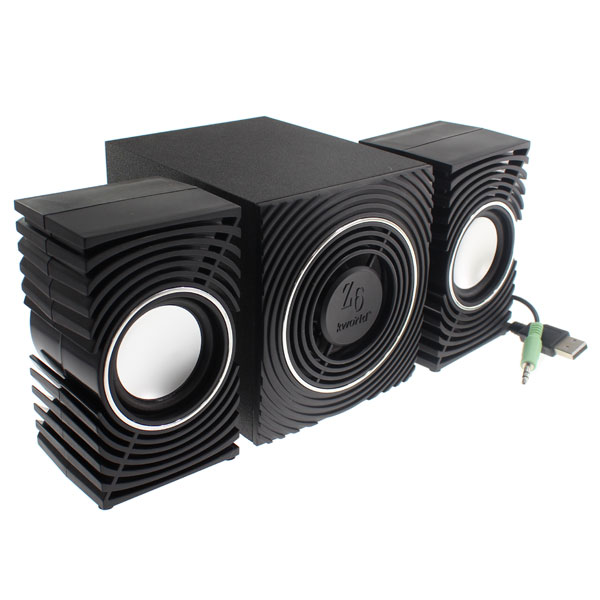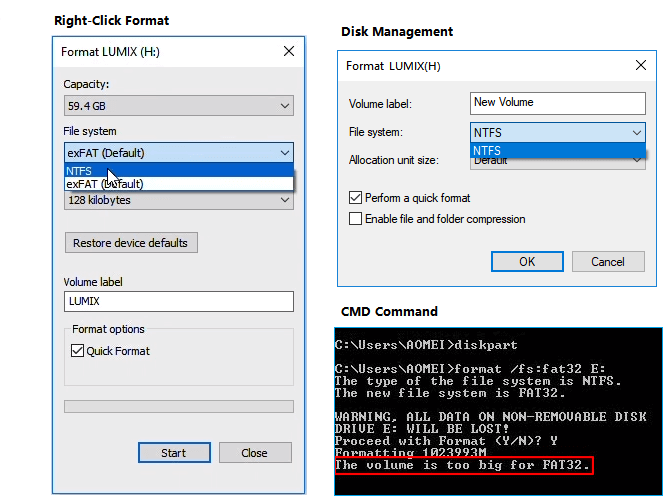
- #Fat32 usb for mac and windows movie#
- #Fat32 usb for mac and windows drivers#
- #Fat32 usb for mac and windows Pc#
Why won't my computer recognize my USB for longer than 30 seconds?

#Fat32 usb for mac and windows Pc#
For instance, you had it assigned to G yet your friend's PC assigned it to F. Make sure that your friends computer did not assign the thumb drive to a different drive on the PC.
#Fat32 usb for mac and windows drivers#
Unplug the thumb drive and clear out any previous installations and try installing the drivers fresh as stated in an above answer. Check Properties of the thumb drive on your PC and check enabled if it says disabled in CMOS.
#Fat32 usb for mac and windows movie#
The movie you transferred could have come with a virus. Your drive could have also tripped the safety function to disable the CMOS after you plugged it into a friends computer. This helps data integrity by recording the changes to files before they take place. The only other downside to exFAT is it’s not supported by Apple’s Time Machine software.You probably did not eject it properly. One downside to exFAT is that it doesn’t have any journaling functionality, which is a system whereby any changes to the files on the disk are noted in a log before they’re actually performed. For swapping or sharing large files, especially between OSes, exFAT is the way to go. Though it’s a proprietary Microsoft technology, Apple licensed it for use in its OSes so you’ll see it as an option when formatting a drive in OS X. It debuted in Windows Vista SP1, it has a maximum file size of 16 exabytes (EB) (it’s going to take us a while to hit that), and it’s compatible with both Mac and PC. If you’re just sharing small files between computers, however, it’s a fine system to use.ĮxFAT: This is an updated file system created by Microsoft to replace FAT32. The biggest limitation is that it has a file size limit of 4GB, which can be a problem with today’s Blu Ray rips and 4K video files. The reason for its ubiquity is that it will work on any PC you plug it into, including both Macs and PCs, Linux boxes, and vintage machines that use USB 2.0. Though Windows file systems work the same regardless of drive type I wanted to expand on his piece a bit by including the system called exFAT, so in this piece I’ll discuss the three file systems, their pluses and negatives, and which one to use according to your needs.įat32: This is the old standby, and the file system that is usually pre-installed on any USB key you buy from the store.

My colleague wrote about this previously in regards to external drives, but he was discussing high-capacity hard drives you plug into your PC. In dealing with this it occurred to me that Majid probably isn’t alone, and people might not be aware of the fact that you can format a USB key in Windows using one of three available file systems, and that each system has both advantages and limitations.

He sent me a screenshot that clearly indicated the problem, as it read “The file is too large for the destination file system.” I replicated the issue quite easily by trying to move a 10GB file to a Fat32 disk, as Fat32 can’t handle any file larger than 4GB.įAT32 has a 4GB file size limitation, making it tough to copy HD or 4K video footage. Majid was unable to copy a movie from his PC to his newly acquired 32GB USB key, and wondered why.


 0 kommentar(er)
0 kommentar(er)
